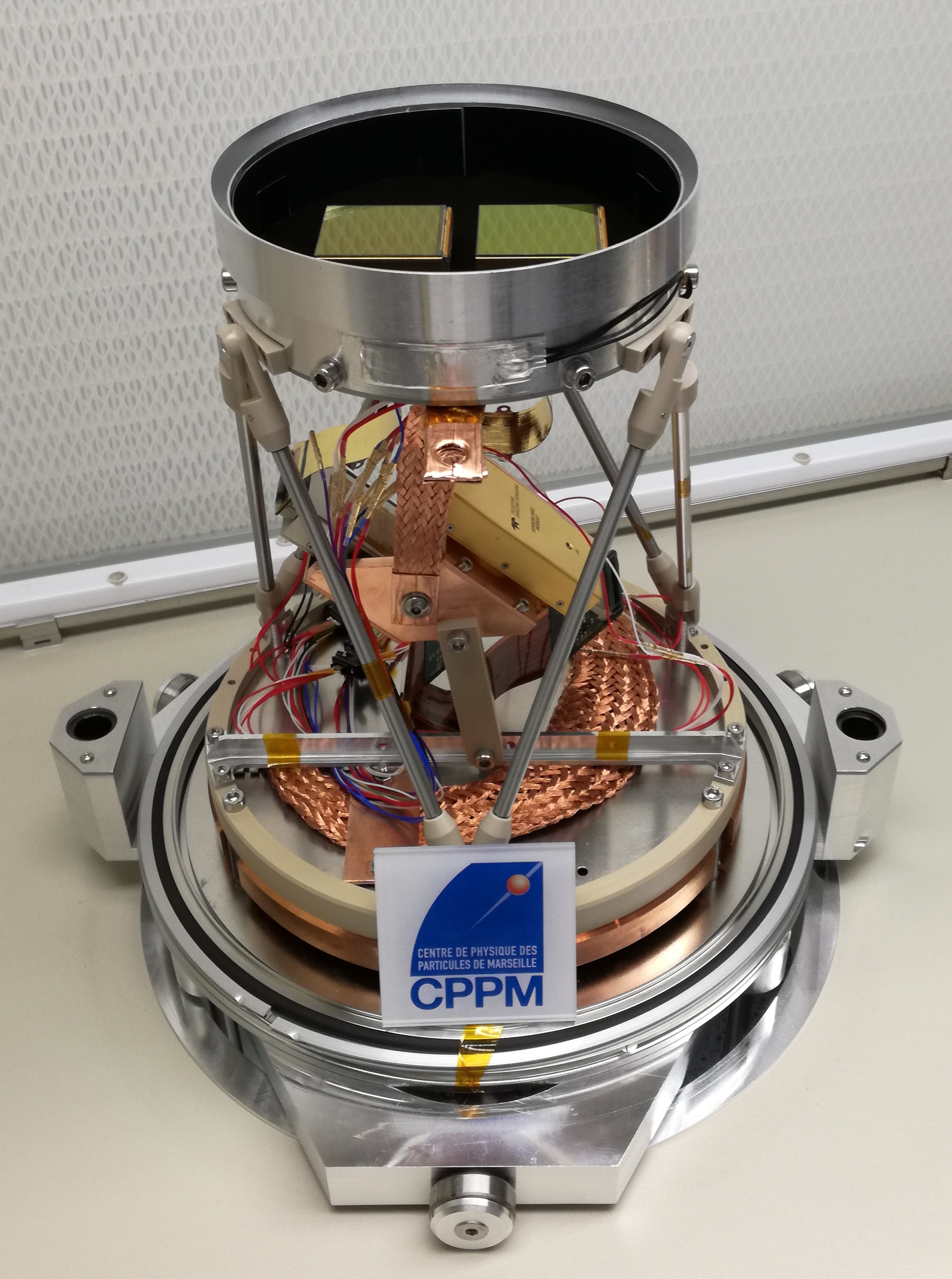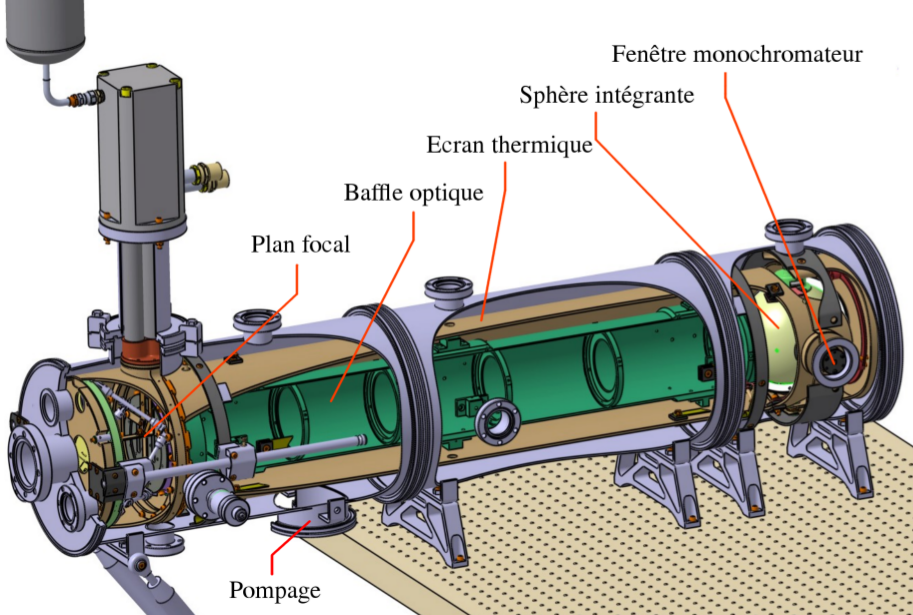

The CPPM, through the Renoir group, is involved in the preparation of the Near-Infrared SpectroPhotometer (NISP) instrument for the Euclid mission. The first activity in which the group is involved are the infrared detectors of the NISP instrument (cameras sensitive to the near infrared part of the electromagnetic speech of light - between 1100 and 2000 nm). The detectors are tested and delivered to the Euclid consortium by NASA. 20 detectors will be selected as "flight" detectors and delivered to the CPPM to be characterized and integrated into the focal plane of the NISP instrument. The instrument will then be delivered to ESA in 2018.
The infrared detectors are derived from a so-called hybrid technology, similar to that used for CMOS detectors (the sensors of the mainstream cameras). This hybrid technology is the coupling between the detection zone and the reading zone which are composed of different materials (respectively cadmium mercury telluride -HgCdTe- and silicon -Si).
The characterization of flight sensors must provide a mapping of the parameters defining the response of the pixels in order to be able to respond to the needs of processing the raw data. Characterization maps fall into two categories, those that require flat field illumination and those that require no light. The main parameters that need to be known are the total noise of the detector related to its read mode, as well as non-linearity, conversion gain, inter pixel capacity and persistence.
The characterization of flight detectors must preserve the integrity of detectors delivered and evaluate their performance under the same conditions as during the mission. This means that these detectors must operate at temperatures ranging from 85 to 100 Kelvins and at pressures of the order of 10-6 mbar.
In order to achieve these experimental conditions for the detectors, it is necessary to use what is called a cryostat. This cryostat is a closed enclosure in which the air is pumped to decrease the pressure to 10-6 mbar (1 million times less than the atmospheric pressure), once the desired pressure is reached, the temperature of the bench is lowered Of tests (and thus of detectors) using cryogenic equipment.
For the characterization of the detectors, several parameters have to be calculated. The challenge is to get the data necessary for the analysis. On the one hand, it is necessary to have adequate instrumentation for the measurements and then to develop analytical tools to get the results out.

Focal plane of the Andromede cryostat. @ Benoît SERRA.
The necessary instrumentation depends on the parameters to be calculated. For example, to measure the dark current, the detector response must be determined in the absence of incident photon sources. It is therefore necessary to isolate the detectors from possible sources of light. Thus, for each of the parameters, one defines a set of instruments or mechanical parts necessary:

Pegasus characterization cryostat design scheme. @ Philippe LAGIER.
We thus have two fully equipped cryostats for the characterization of these flight detectors. These cryostats have been mounted in a clean room (Video below) to control the amount of dust to which the detectors can be exposed.
By Benoît Serra